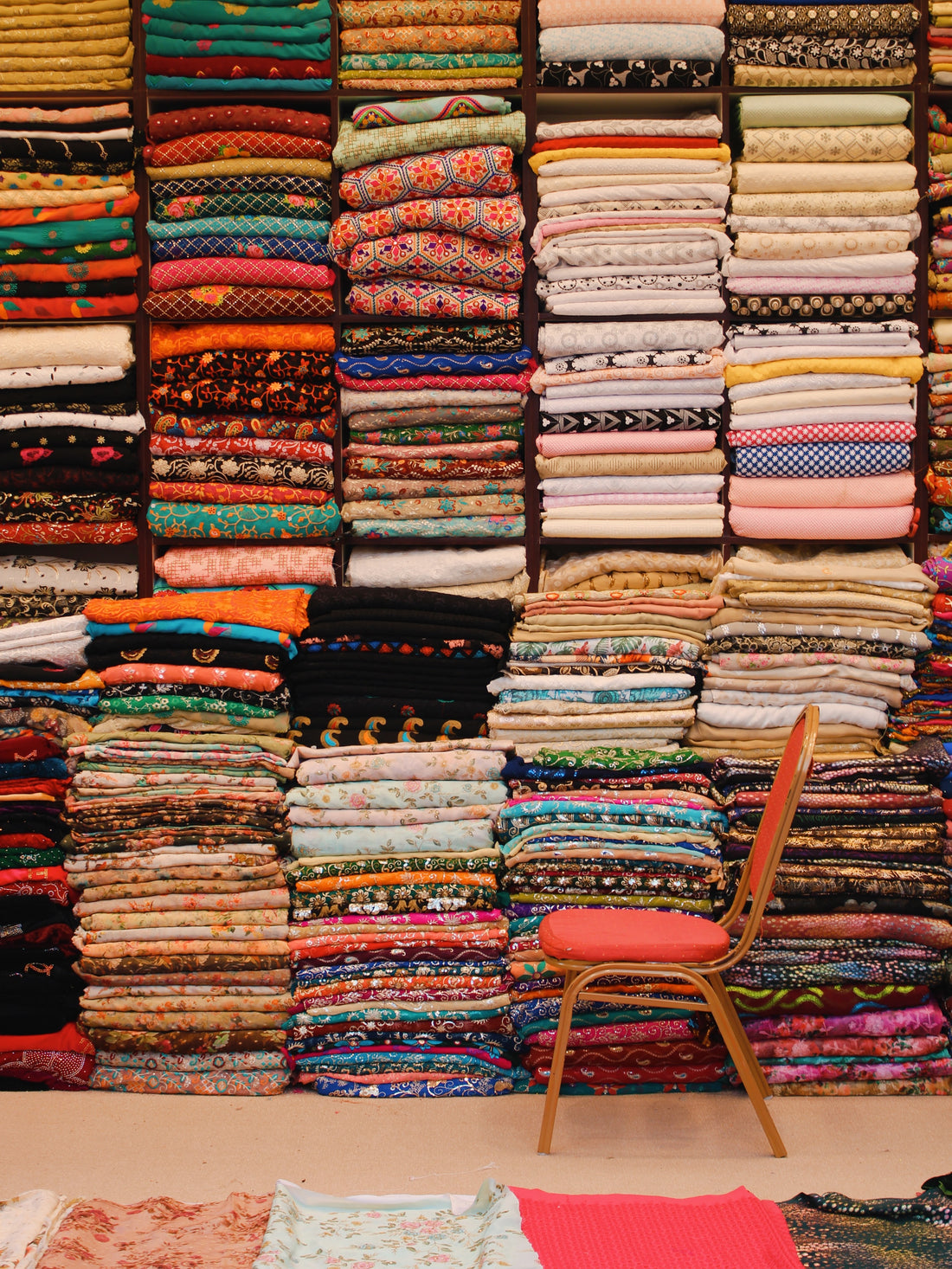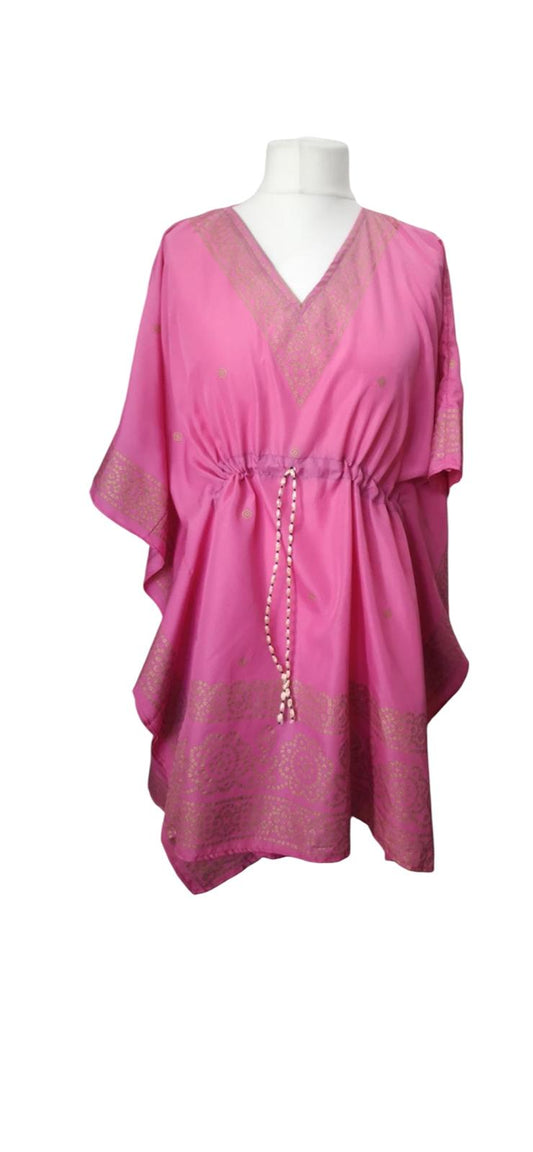
Kaftan v's Muumuus
Share
Fashion has a fascinating way of blending cultures and traditions, creating an eclectic tapestry of styles. Two such captivating garments that have captured the imagination of fashion enthusiasts around the world are the kaftan and the muumuu. With their loose, flowing silhouettes and rich cultural heritage, these ethnic wears exude elegance and comfort. In this blog post, we embark on a sartorial journey to explore the difference between kaftans and muumuus, shedding light on their unique characteristics and the cultural significance they hold.
Kaftan: Timeless Regality
Originating from the Middle East, the kaftan is a richly embroidered, loose-fitting garment that has been a symbol of regality for centuries. This ankle-length tunic is crafted from luxurious fabrics such as silk, satin, or chiffon, adorned with intricate patterns and embellishments that reflect the cultural heritage of the region. The versatility of the kaftan lies in its ability to effortlessly transition from casual daywear to glamorous evening attire. Its billowing sleeves and relaxed silhouette offer a sense of freedom and comfort, while the vibrant colors and elaborate embroidery make it a stunning piece for special occasions.
Muumuu: The Breezy Island Charm
On the other hand, the muumuu hails from the beautiful Polynesian islands of Hawaii. This loose, caftan-like dress is characterized by its vibrant, floral prints and generous cuts, allowing for unrestricted movement and breathability. Traditionally made from cotton or rayon, the muumuu embraces the spirit of the tropics, evoking a sense of relaxation and carefree living. Its colorful patterns and flowing design make it a beloved choice for beachwear or as a casual summer dress. The muumuu's unique aesthetic celebrates the island's natural beauty and the warm, welcoming culture of its people.
While both the kaftan and the muumuu share loose, comfortable silhouettes, they possess distinctive features that set them apart.
Cultural Heritage: The kaftan carries a rich history of Middle Eastern influence, with its opulent fabrics, intricate embroidery, and regal associations. Conversely, the muumuu represents the laid-back, tropical lifestyle of Hawaii, embracing the island's flora and vibrant colors.
Embellishments: Kaftans exhibit ornate embroidery, beadwork, and sequins, showcasing the craftsmanship and attention to detail. Muumuus, on the other hand, rely on bold, colorful prints featuring tropical flowers and foliage to create a visually striking appearance.
Occasion Versatility: Kaftans are known for their versatility, effortlessly transitioning from casual daywear to glamorous evening attire. Muumuus, with their casual, beachy vibe, are primarily associated with leisurely activities and warm-weather gatherings.
Concluding Thoughts:
Kaftans and muumuus are two enchanting examples of ethnic wear that have captivated fashion enthusiasts worldwide. While the kaftan brings to the table a regal allure with its opulent fabrics and intricate embroidery, the muumuu embraces the carefree charm of the Polynesian islands with its vibrant prints and flowing silhouette. Both garments offer a blend of comfort and style, allowing wearers to express their individuality while honoring the rich cultural heritage associated with each piece.
So, whether you're in the mood for Middle Eastern opulence or the breezy allure of tropical islands, let these ethnic wears transport you to a world of elegance and relaxation.
Kaftan: Timeless Regality
Originating from the Middle East, the kaftan is a richly embroidered, loose-fitting garment that has been a symbol of regality for centuries. This ankle-length tunic is crafted from luxurious fabrics such as silk, satin, or chiffon, adorned with intricate patterns and embellishments that reflect the cultural heritage of the region. The versatility of the kaftan lies in its ability to effortlessly transition from casual daywear to glamorous evening attire. Its billowing sleeves and relaxed silhouette offer a sense of freedom and comfort, while the vibrant colors and elaborate embroidery make it a stunning piece for special occasions.
Muumuu: The Breezy Island Charm
On the other hand, the muumuu hails from the beautiful Polynesian islands of Hawaii. This loose, caftan-like dress is characterized by its vibrant, floral prints and generous cuts, allowing for unrestricted movement and breathability. Traditionally made from cotton or rayon, the muumuu embraces the spirit of the tropics, evoking a sense of relaxation and carefree living. Its colorful patterns and flowing design make it a beloved choice for beachwear or as a casual summer dress. The muumuu's unique aesthetic celebrates the island's natural beauty and the warm, welcoming culture of its people.
While both the kaftan and the muumuu share loose, comfortable silhouettes, they possess distinctive features that set them apart.
Cultural Heritage: The kaftan carries a rich history of Middle Eastern influence, with its opulent fabrics, intricate embroidery, and regal associations. Conversely, the muumuu represents the laid-back, tropical lifestyle of Hawaii, embracing the island's flora and vibrant colors.
Embellishments: Kaftans exhibit ornate embroidery, beadwork, and sequins, showcasing the craftsmanship and attention to detail. Muumuus, on the other hand, rely on bold, colorful prints featuring tropical flowers and foliage to create a visually striking appearance.
Occasion Versatility: Kaftans are known for their versatility, effortlessly transitioning from casual daywear to glamorous evening attire. Muumuus, with their casual, beachy vibe, are primarily associated with leisurely activities and warm-weather gatherings.
Concluding Thoughts:
Kaftans and muumuus are two enchanting examples of ethnic wear that have captivated fashion enthusiasts worldwide. While the kaftan brings to the table a regal allure with its opulent fabrics and intricate embroidery, the muumuu embraces the carefree charm of the Polynesian islands with its vibrant prints and flowing silhouette. Both garments offer a blend of comfort and style, allowing wearers to express their individuality while honoring the rich cultural heritage associated with each piece.
So, whether you're in the mood for Middle Eastern opulence or the breezy allure of tropical islands, let these ethnic wears transport you to a world of elegance and relaxation.




